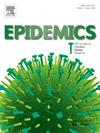分析见解,支持将废水和环境监测数据用于传染病和大流行防范
IF 2.4
3区 医学
Q2 INFECTIOUS DISEASES
引用次数: 0
摘要
基于废水的流行病学是从污水系统中检测病原体并对这些数据进行解释以改善公共卫生。自2020年以来,其使用范围有所扩大,当时证明可以从受影响人群的废水中成功提取SARS-CoV-2 RNA。在这一观点中,我们概述了废水中病原体检测的最新进展,提出了一个确定废水采样用于病原体检测的框架,并提出了分析需要发展的领域。确保数据收集和分析都针对流行病不同阶段的关键问题进行调整,将改进所作的推断。为了使分析有用,我们需要确定是否存在感染、早期发现感染、可靠地估计流行轨迹和流行程度,以及在不依赖于共识序列的情况下发现新的变异的方法。这一研究领域包含了许多改进了对收集数据的解释的创新,我们乐观地认为创新将在未来继续。本文章由计算机程序翻译,如有差异,请以英文原文为准。
Analysis insights to support the use of wastewater and environmental surveillance data for infectious diseases and pandemic preparedness
Wastewater-based epidemiology is the detection of pathogens from sewage systems and the interpretation of these data to improve public health. Its use has increased in scope since 2020, when it was demonstrated that SARS-CoV-2 RNA could be successfully extracted from the wastewater of affected populations. In this Perspective we provide an overview of recent advances in pathogen detection within wastewater, propose a framework for identifying the utility of wastewater sampling for pathogen detection and suggest areas where analytics require development. Ensuring that both data collection and analysis are tailored towards key questions at different stages of an epidemic will improve the inference made. For analyses to be useful we require methods to determine the absence of infection, early detection of infection, reliably estimate epidemic trajectories and prevalence, and detect novel variants without reliance on consensus sequences. This research area has included many innovations that have improved the interpretation of collected data and we are optimistic that innovation will continue in the future.
求助全文
通过发布文献求助,成功后即可免费获取论文全文。
去求助
来源期刊

Epidemics
INFECTIOUS DISEASES-
CiteScore
6.00
自引率
7.90%
发文量
92
审稿时长
140 days
期刊介绍:
Epidemics publishes papers on infectious disease dynamics in the broadest sense. Its scope covers both within-host dynamics of infectious agents and dynamics at the population level, particularly the interaction between the two. Areas of emphasis include: spread, transmission, persistence, implications and population dynamics of infectious diseases; population and public health as well as policy aspects of control and prevention; dynamics at the individual level; interaction with the environment, ecology and evolution of infectious diseases, as well as population genetics of infectious agents.
 求助内容:
求助内容: 应助结果提醒方式:
应助结果提醒方式:


